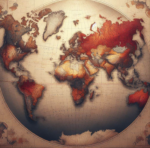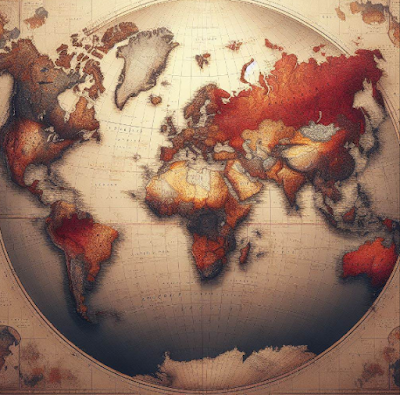The scourge of poverty wounding citizens in the developing world has provoked much discussion in affluent countries. Quite unreasonably, rich countries have been indicted for inciting poverty in poor countries. Unfortunately, the assumption that prosperity stems from exploitation is still widely popular in academia and politics. However, the historical record casts serious doubt on this argument.
Imperialism was the standard in the ancient world, but no imperialist power achieved Schumpeterian growth. For example, bouts of economic progress in ancient Rome and Greece fizzled out despite imperial pursuits. Indeed, the national treasury is expanded when empires extract tributes from conquered states, but this does not redound to superior living standards for ordinary people. The wealth of the state is not a proxy for individual prosperity.
Surveying history it becomes clear that pursuing economic extraction does not lead to long-term prosperity. Typically, countries with a history of exploiting others are poorer than their peers. In Africa, Benin is an economic dwarf despite its rapacious history, but less aggressive peers like Mauritius and Botswana are economic stars. Similarly, the Ivory Coast experienced some of its best years when the country invested in promarket policies.
On the European side, empire proved to be quite costly for Sweden. Sweden became the envy of the world after the collapse of its empire. Further, the economic success that coincided with Swedish imperialism was the result of governance and economic reforms rather than empire-building. Japan experienced the glory of empire late in its history and like other examples, the evidence shows that it was a burden.
Using political clout to exploit other countries is not a strategy for success. Indeed, history reveals that many poor countries transitioned into affluence by facilitating commerce rather than chasing colonies. Finland was a poor European country in the early twentieth century and had no colonies like Switzerland. Yet both are two of the most successful countries in the world.
The primary difference between rich and poor countries is productivity. Being productive unleashes opportunities for innovation and wealth creation. Poverty is the natural condition of humanity, and countries get rich by adding to the world’s capital stock. Taiwan, South Korea, and Singapore are resource-poor countries relative to African and Latin American countries, but due to high levels of productivity and innovation, they have joined the ranks of the elites.
Another characteristic of successful countries is the high quality of their institutions. When institutions are designed to facilitate entrepreneurship and capital formation people will be more motivated to produce because their efforts won’t be penalized. According to a landmark study, cross-country differences in productivity are a consequence of institutional quality. Likewise, institutional quality also determines a country’s ability to attract investors.
Capital thrives where it is rewarded and flees from places where it is harassed. For instance, during the latter phase of colonialism, there was a shift to statist policies. However, after independence instead of promoting free markets, ex-colonies endorsed statist institutions that were erected by colonial power. Relying on regulations to extract resources from industry and limit imports became the agenda in places like Ghana and Tanzania.
Interestingly, Tanzania did not get rich despite being a primary recipient of foreign aid from Europe. Money must be used efficiently for it to reap value. Doling out funds to poor countries is futile if they are hesitant to reform. Like Tanzania, Jamaica has been a primary recipient of foreign aid from the European Union and America, but its economy only started to see mild improvements after enacting an economic reform program sponsored by the International Monetary Fund.
Also paramount to the success of rich countries is that they are efficient users of capital and technology since they are more productive. Rich countries are adept at commercializing products and improving on existing technologies. A poor country will produce ten thousand tons of sugar; however, a rich country without a comparative advantage in sugar production will produce twenty thousand tons of sugar more efficiently. Additionally, due to the quality of human capital, rich countries are poised to export more successful goods, whereas poorer countries concentrate on lower-value goods.
Therefore, unless poor countries reform and increase human capital levels they will remain impoverished. Blaming rich countries for their poverty will only absolve them of responsibility and ensure that they remain trapped in poverty.
Full story here Are you the author? Previous post See more for Next postTags: Featured,newsletter
























